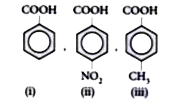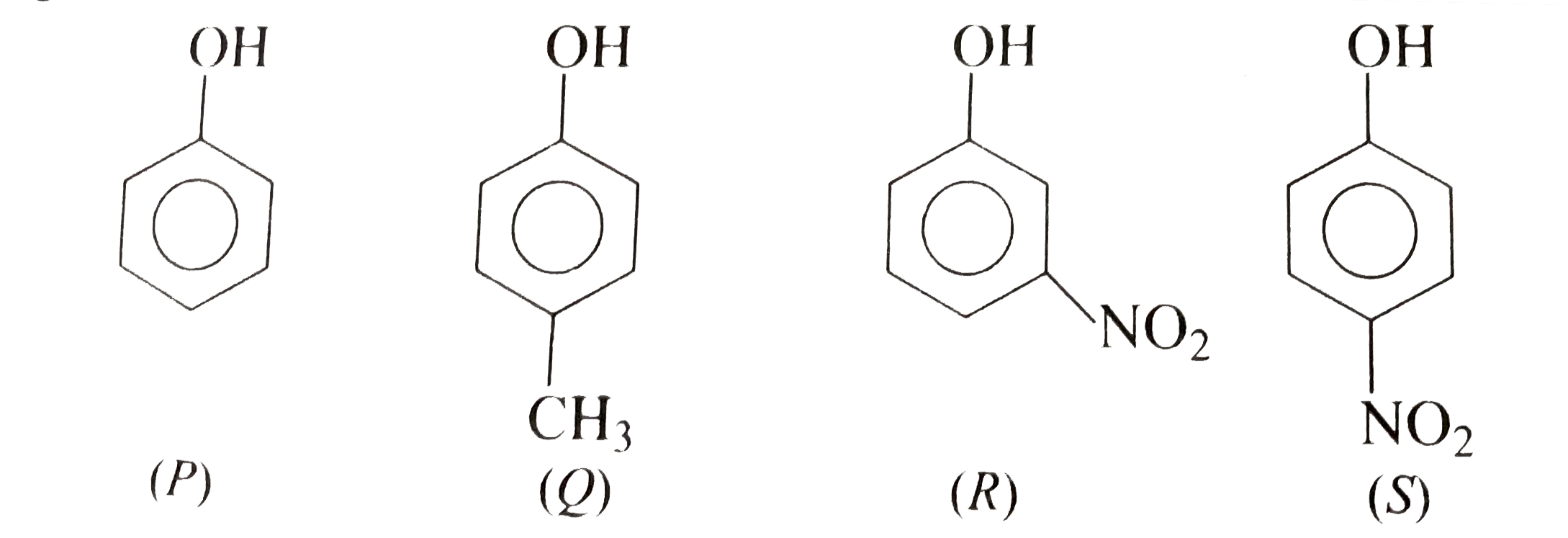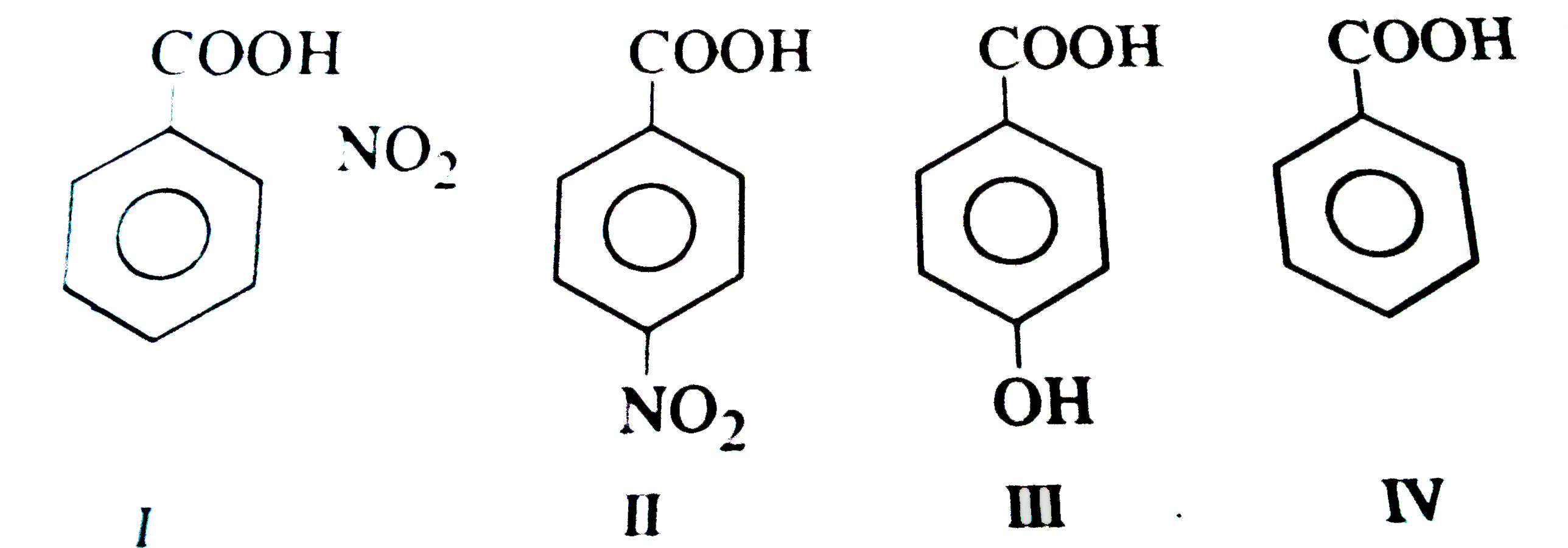Arrange the following compound groups in the increasing order of their property indicated:
p-nitrophenol, ethanol, phenol (acidic character)
To arrange the compounds p-nitrophenol, ethanol, and phenol in increasing order of their acidic character, we need to analyze the ability of each compound to donate a proton (H⁺). The acidic character is influenced by the stability of the conjugate base formed after the proton is lost.
1. Identify the Compounds:
- p-Nitrophenol: Contains a hydroxyl group (-OH) attached to a benzene ring with a nitro group (-NO₂) at the para position.
- Ethanol: A simple alcohol with the structure CH₃CH₂OH.
- Phenol: A hydroxyl group (-OH) attached directly to a benzene ring.
2. Understand Acidic Character:
- Acidic character refers to the tendency of a compound to donate a proton (H⁺). The stronger the acid, the more readily it donates H⁺.
- The stability of the conjugate base (the species formed after the acid donates a proton) plays a significant role in determining the acidic strength.
3. Analyze p-Nitrophenol:
- The nitro group (-NO₂) is an electron-withdrawing group due to its -I (inductive) and -R (resonance) effects. This decreases the electron density on the benzene ring and stabilizes the negative charge on the conjugate base (p-nitrophenoxide ion) after H⁺ is lost.
- Therefore, p-nitrophenol is more acidic than phenol.
4. Analyze Phenol:
- Phenol has a hydroxyl group attached to a benzene ring. It can donate a proton, and the resulting phenoxide ion is stabilized by resonance. However, it is less acidic than p-nitrophenol because it lacks the strong electron-withdrawing effect of the nitro group.
5. Analyze Ethanol:
- Ethanol has a hydroxyl group but is attached to an alkyl group (ethyl). The alkyl group has a +I (inductive) effect, which increases electron density on the oxygen atom, making it less likely to donate a proton.
- Therefore, ethanol is the least acidic among the three compounds.
6. Arrange in Increasing Order of Acidity:
- Based on the analysis:
- Ethanol (least acidic)
- Phenol (more acidic than ethanol)
- p-Nitrophenol (most acidic)
Final Order:
Ethanol < Phenol < p-Nitrophenol
- p-Nitrophenol: Contains a hydroxyl group (-OH) attached to a benzene ring with a nitro group (-NO₂) at the para position.
- Ethanol: A simple alcohol with the structure CH₃CH₂OH.
- Phenol: A hydroxyl group (-OH) attached directly to a benzene ring.
- Acidic character refers to the tendency of a compound to donate a proton (H⁺). The stronger the acid, the more readily it donates H⁺.
- The stability of the conjugate base (the species formed after the acid donates a proton) plays a significant role in determining the acidic strength.
- The nitro group (-NO₂) is an electron-withdrawing group due to its -I (inductive) and -R (resonance) effects. This decreases the electron density on the benzene ring and stabilizes the negative charge on the conjugate base (p-nitrophenoxide ion) after H⁺ is lost.
- Therefore, p-nitrophenol is more acidic than phenol.
- Phenol has a hydroxyl group attached to a benzene ring. It can donate a proton, and the resulting phenoxide ion is stabilized by resonance. However, it is less acidic than p-nitrophenol because it lacks the strong electron-withdrawing effect of the nitro group.
- Ethanol has a hydroxyl group but is attached to an alkyl group (ethyl). The alkyl group has a +I (inductive) effect, which increases electron density on the oxygen atom, making it less likely to donate a proton.
- Therefore, ethanol is the least acidic among the three compounds.
- Based on the analysis:
- Ethanol (least acidic)
- Phenol (more acidic than ethanol)
- p-Nitrophenol (most acidic)
Ethanol < Phenol < p-Nitrophenol
Topper's Solved these Questions
Similar Questions
(a) Write the formula of reagents used in the following reactions:
(i) Bromination of phenol to 2, 4,6-tribromophenol
(ii) Hydroboration of propene and then oxidation to propanol.
(b) Arrange the following compound groups in the increasing order of their property indicated.
(i) p-nitrophenol, ethanol, phenol (acidic character)
(ii) Propanol, Propane, Propanal (boiling point)
(c) Write the mechanism (using curved arrow notation) of the following reaction:
CH3−CH2−+OH2CH3CH2OH−−−−−−−→CH3−CH2−+O∣H−CH2−CH3+H2O
View SolutionArrange the following compounds in increasing of order of their acidic strength 4-Nitrophenol, Phenol, 2, 4, 6-trinitrophenol.
View Solution
Knowledge Check
Arrange the following compounds in increasing order of acid strength
 A(i)>(ii)>(iii)B(ii)<(i)<(iii)C(iii)<(i)<(ii)D(iii)>(i)>(ii)
A(i)>(ii)>(iii)B(ii)<(i)<(iii)C(iii)<(i)<(ii)D(iii)>(i)>(ii)Arrange the following compounds in increasing order of acidity :
 AP>Q>R>SBS>Q>R>PCS>R>P>QDR>S>R>P
AP>Q>R>SBS>Q>R>PCS>R>P>QDR>S>R>PArrange the following compounds in increasing order of their acidic strength.
 AI<II<III<IV<VBIV<I<III<II<VCIII<II<I<IV<VDII<I<III<IV<V
AI<II<III<IV<VBIV<I<III<II<VCIII<II<I<IV<VDII<I<III<IV<V
Arrange the following compounds in increasing order of acidic strength :
p-nitrophenol, ethanol, phenol
View SolutionArrange the following in increasing order of property indicated:
Oxidising power I, F, Br, Cl
View SolutionArrange the following compounds in the increasing order of their acidic strength:
(i) m-Nitrophenol (ii) m-Cresol
(iii) Phenol (iv) m-Chlorophenol
View SolutionArrange the following compounds in increasing order of their acidic strength:
(i) m-nitrophenol (ii) m-cresol
(iii) phenol (iv) m-chlorophenol
View SolutionArrange the following acid in order of increasing acidity

View Solution
